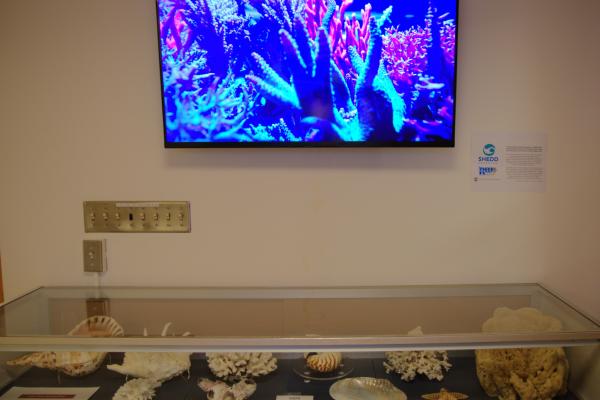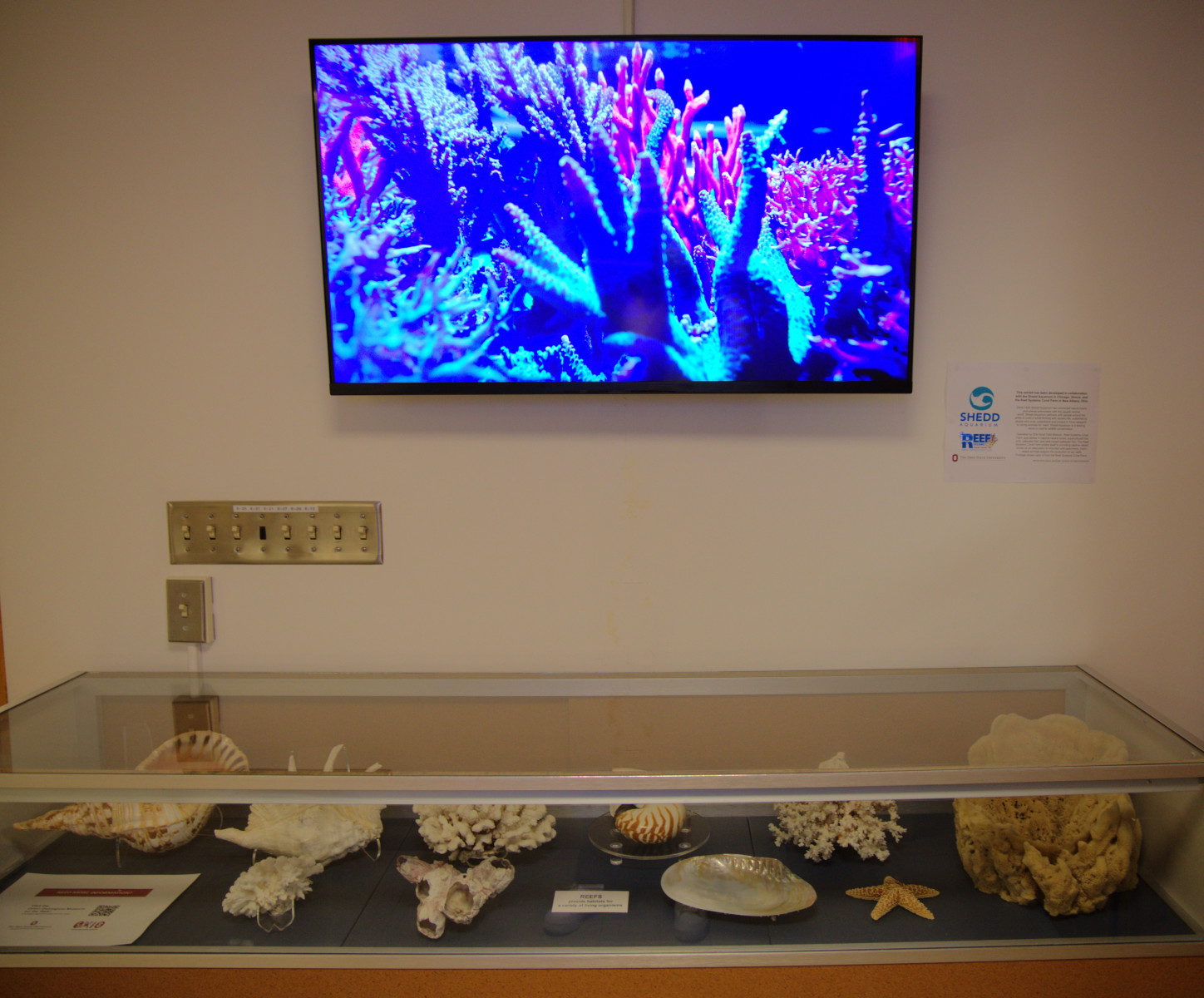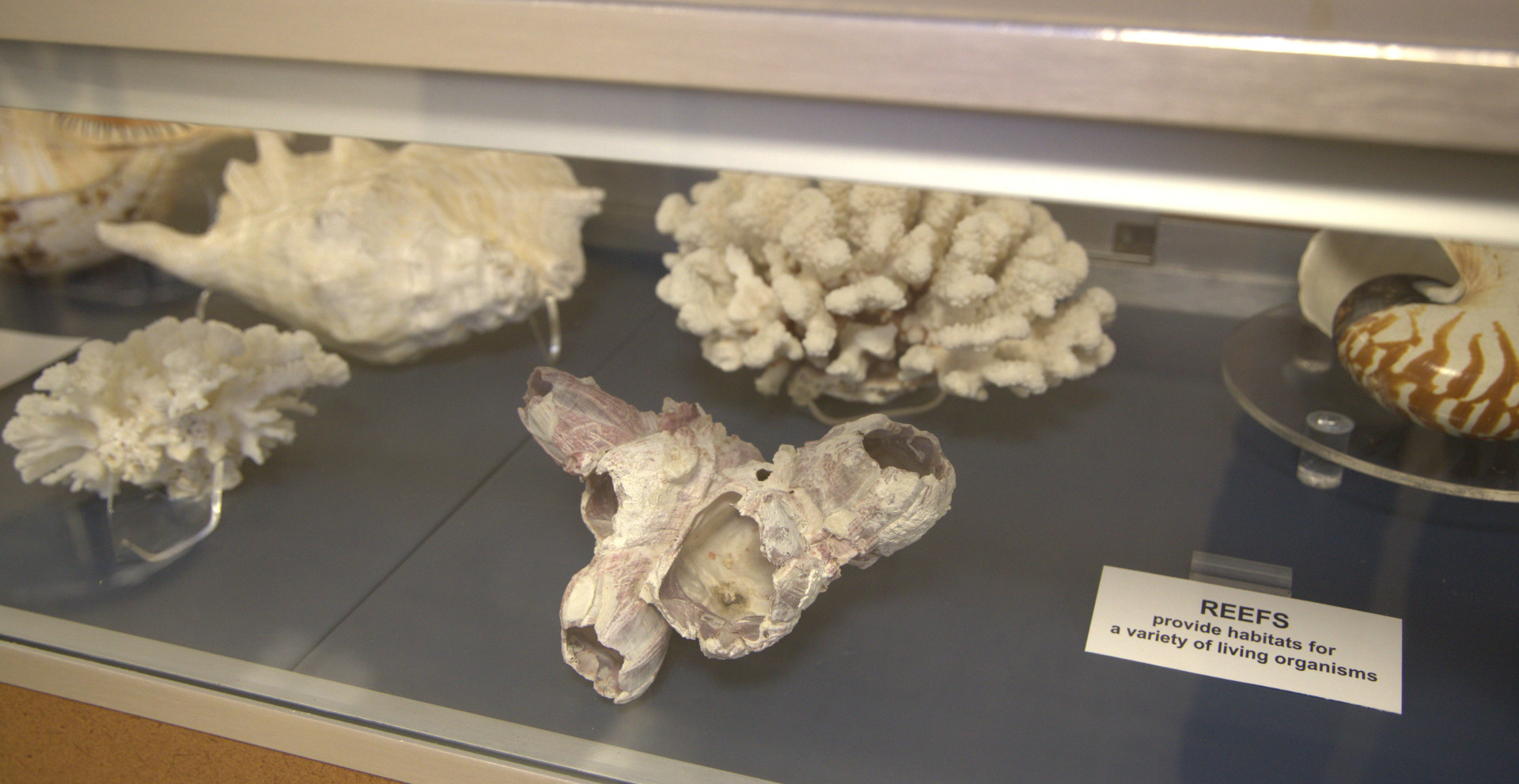Coral reef exhibition opens at Ohio State

Originally posted by Ohio State News. Author: Franny Lazarus.
People may be surprised to learn that, despite being in the heart of the Midwest, Ohio is home to spectacular coral reef fossils. Why? Because millions of years ago, the state did not look like it does now.
“This area, during the Silurian and Devonian periods, was in low latitudes. It was somewhere in the tropics,” said Loren Babcock, professor of earth sciences and director of the Orton Geological Museum at The Ohio State University. “It was covered by warm, shallow seas. That is the perfect setting for coral reefs to develop.”
It is fitting then that Ohio State and Orton Hall, the first natural history museum in Ohio, are home to a new exhibition that explores the impact of climate change on coral reefs.
The exhibition is a significant piece of fourth-year student Tony Caputo’s thesis project. Caputo, who is graduating with a bachelor’s degree in earth sciences in the fall, was first introduced to the plight of coral reefs during his sophomore year. He took a class with Andréa Grottoli, a distinguished professor of earth sciences who is a coral expert.
“Dr. Grottoli was describing this dire situation,” he said. “After thinking about it for a little while, I thought that I’d rather be on the side of people who are actively trying to help the world.”
He emailed Grottoli an initial idea, which eventually became the Orton exhibition. Visitors will see fossilized coral, some from as close as the Scioto River, and two livestreams of living coral, one from the Shedd Aquarium in Chicago and one from Reef Systems Coral Farm in New Albany.
While Grottoli has connections at both facilities, the idea was all Caputo’s, she said.
“This really is a collaborative project,” Grotolli said. “But it was spearheaded by Tony. … It’s because of Tony that we’re doing this at all.”

Grottoli said the exhibition will have a permanent place in Orton Hall’s museum, which will allow more people to see coral, maybe for the first time.
“Most people have not had the opportunity to go where there are coral reefs,” she said. “So now we bring the reef to Ohio. We bring that experience to Ohio, and by having two screens at the exhibition’s entrance, we’re hoping to create an immersive experience.”
Climate change has dealt a crushing blow to coral reefs, which are fragile creatures that require a narrow temperature band to survive. According to one model, Grottoli said, 100% of all coral reefs will die by 2050 at the current rate of sea warming.
Babcock said most people are familiar with polar global warming issues, but reefs don’t attract the attention that melting glaciers do.
“We hear lots about how fragile the ecosystems in the Arctic and Antarctic are, and they are,” he said. “We hear much less about how important and fragile reef ecosystems are.”
And the reef ecosystems are important.

“Reefs are home to a large majority of marine creatures, at least macroscopic ones,” Babcock added. “And they form something of an oasis in essentially ocean deserts.”
Helping people understand the consequences climate change has had and will have for corals has been a good experience for Caputo.
“My interest lies in effective dissemination of scientific information,” he said. “It’s been interesting finding a way to present information that’s not too science-heavy, finding ways to include all the proper information in a way that people understand.”
One of the best tools for this is fossilized coral. Babcock said that reefs have played a major role in marine biology for more than 500 million years, and including fossils may help visitors understand just how long that is.
“The fossils show the longevity of corals over geologic time,” Grottoli said. “They show the resiliency of coral on geologic timescales. But they also point to the vulnerability of coral right now because we’re destroying them in the blink of an eye.”
“We want to understand that corals have been here far longer than humans,” Caputo said.
Caputo has enjoyed working on the exhibition so much that he is working on a museum curation certificate.
“I hope visitors enjoy it as much as I’ve enjoyed learning about it,” he said. “I’d love for them to consider these topics. We’re a landlocked state, so maybe they’re not thinking about corals like someone on the coast of Florida might be. It will take all of us working together to tackle these problems.”
